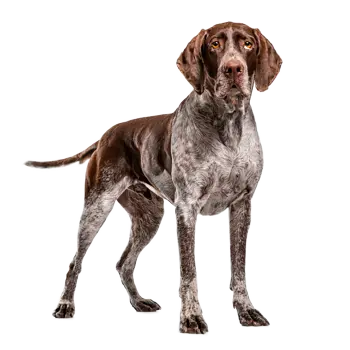Training and exercise represent crucial elements of Old Danish Bird Dog ownership, directly impacting the breed's physical health, mental well-being, and behavior within the household. These intelligent hunting dogs require both physical outlets for their energy and mental challenges to satisfy their keen minds. Understanding and meeting these needs creates a well-adjusted companion whether the dog works in the field or serves primarily as a family pet.
The Old Danish Bird Dog's trainability ranks among its most appealing characteristics. These dogs possess the intelligence to quickly understand what is being asked of them combined with a genuine desire to please their handlers. This combination makes training a generally positive experience, with many dogs mastering basic obedience commands within the first few months of consistent work. The key to success lies in approaching training with patience, consistency, and an emphasis on positive reinforcement.
Positive training methods work exceptionally well with this breed. Reward-based approaches using treats, praise, and play motivate Old Danish Bird Dogs effectively while building a positive association with training sessions. Harsh corrections, physical punishment, or overly stern verbal reprimands tend to backfire, potentially causing these sensitive dogs to shut down emotionally or become anxious. Handlers who maintain a calm, encouraging demeanor while setting clear expectations achieve the best results.
Puppy training should begin early, focusing on socialization alongside basic commands. Exposing young Old Danish Bird Dogs to various people, places, sounds, and experiences during the critical socialization window between eight and sixteen weeks helps develop confident, well-adjusted adults. Puppy kindergarten classes offer excellent opportunities for controlled socialization while introducing foundational training concepts. Basic commands like sit, stay, come, and heel establish the communication framework for more advanced training later.
Advanced training opportunities abound for those who wish to fully develop their Old Danish Bird Dog's potential. The breed excels in hunting trials, showcasing the pointing and retrieving abilities for which they were developed. Scent work competitions tap into their excellent noses, providing mental stimulation that many dogs find deeply satisfying. Agility, while not the breed's traditional forte, offers another avenue for active dogs and handlers to work together. The breed's calm disposition also makes them candidates for therapy dog certification, where they can share their gentle nature with those in need.
Exercise requirements for the Old Danish Bird Dog are substantial but not extreme compared to some high-drive sporting breeds. These dogs need at least one hour of vigorous physical activity daily, with many individuals benefiting from additional exercise opportunities. Simply turning a dog out into a yard does not satisfy these needs adequately; structured activities where the dog engages both physically and mentally prove most beneficial.
Ideal exercise activities for the Old Danish Bird Dog include long walks or hikes through varied terrain, allowing them to explore and use their noses while covering ground. Jogging with a properly conditioned adult dog provides excellent cardiovascular exercise for both dog and handler. Swimming offers joint-friendly exercise that many dogs enjoy, particularly during warm weather. Field work, even informal exercises that simulate hunting scenarios, taps into the breed's instincts and provides exceptional mental stimulation.
Off-leash exercise should only occur in secure, fenced areas or designated off-leash zones where the dog's safety can be ensured. While Old Danish Bird Dogs maintain closer contact with their handlers than many hunting breeds, their prey drive may override recall training if they encounter wildlife or interesting scent trails. A reliable recall takes time and consistent training to develop, and even well-trained dogs may occasionally struggle when their hunting instincts activate.
Mental exercise deserves equal attention alongside physical activity. Puzzle toys that dispense treats challenge dogs to problem-solve, providing entertainment during quieter periods. Training sessions themselves serve as mental exercise, with short, frequent sessions often proving more effective than lengthy, less frequent ones. Nose work games, whether formal exercises or simple hide-and-seek with treats, engage the breed's exceptional scenting abilities while providing enjoyable bonding opportunities.
Under-exercised Old Danish Bird Dogs may develop behavioral problems including destructive chewing, excessive barking, or restless pacing. These behaviors typically resolve when exercise needs are adequately met, underscoring the importance of maintaining consistent activity routines. Conversely, over-exercising young dogs before their growth plates close can cause orthopedic problems, so puppies under eighteen months should have activity levels carefully managed.
The exercise needs of the Old Danish Bird Dog do not diminish dramatically with age, though the intensity and duration of activities may be adjusted for senior dogs. Maintaining regular activity helps older dogs retain muscle mass, joint flexibility, and mental sharpness. Veterinary guidance helps owners appropriately modify exercise routines as their dogs age, ensuring continued quality of life throughout the senior years.

